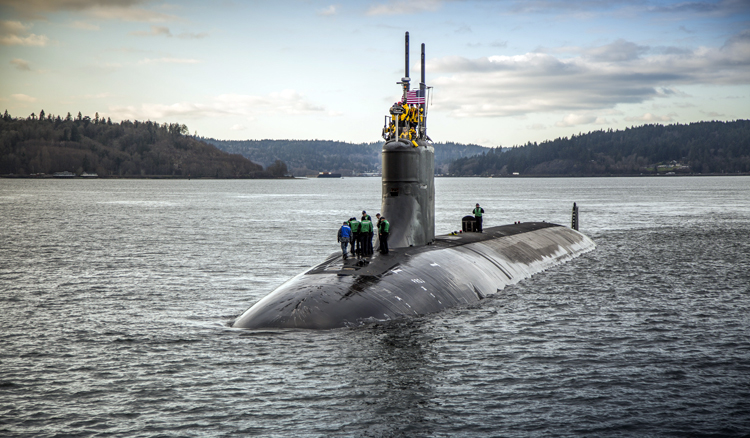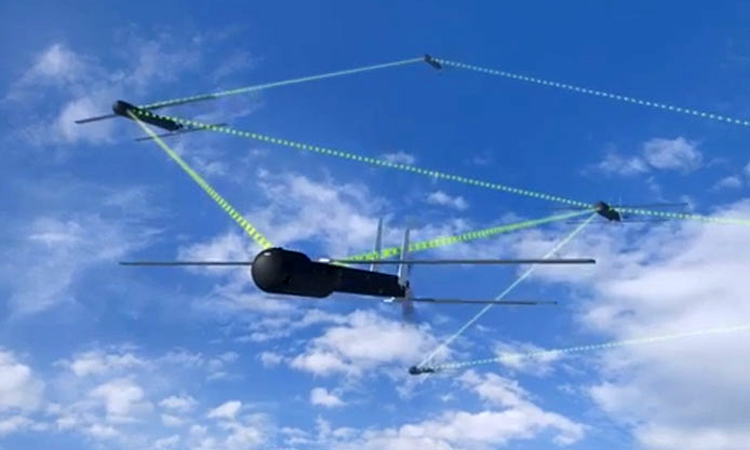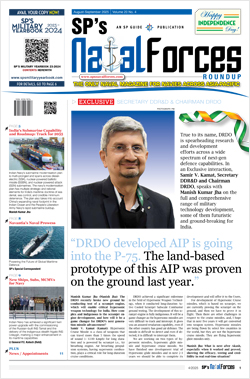INDIAN ARMED FORCES CHIEFS ON OUR RELENTLESS AND FOCUSED PUBLISHING EFFORTS

The insightful articles, inspiring narrations and analytical perspectives presented by the Editorial Team, establish an alluring connect with the reader. My compliments and best wishes to SP Guide Publications.

"Over the past 60 years, the growth of SP Guide Publications has mirrored the rising stature of Indian Navy. Its well-researched and informative magazines on Defence and Aerospace sector have served to shape an educated opinion of our military personnel, policy makers and the public alike. I wish SP's Publication team continued success, fair winds and following seas in all future endeavour!"

Since, its inception in 1964, SP Guide Publications has consistently demonstrated commitment to high-quality journalism in the aerospace and defence sectors, earning a well-deserved reputation as Asia's largest media house in this domain. I wish SP Guide Publications continued success in its pursuit of excellence.
- Operation Sindoor: Resolute yet Restrained
- Advanced MRSAM for India for a greater firepower
- Japan and India set forth a defence cooperation consultancy framework, talks on tank and jet engines
- Uri, Pulwama and now Pahalgam
- Terrorist Attack in Pahalgam in Kashmir: Unfolding a long surgical war against PAK
Deep Sea - Lurking Danger
Unmanned Underwater Vehicles (UUVs) are already proliferating and as they grow in size and scope, they will add more complex and capable sonar, AI brains, communications links, and other technologies that will allow them to better monitor enemy submarine movements and attack them when required
 |
The Author is Former Director General of Information Systems and A Special Forces Veteran, Indian Army |

On October 2, 2021 a US nuclear-powered submarine reportedly collided with an underwater object in the South China Sea (SCS).The US Seventh Fleet said on October 7 that the USS ‘Connecticut’, a Seawolf-class fast attack submarine, commissioned more than two decades ago, collided with an unknown object on October 2 but was in safe and stable condition after the collision. The statement did not say where exactly the underwater collusion took place, only mentioning ‘international waters, but stated that the submarine’s nuclear propulsion plant was not affected by the collision, no assistance was requested and extent of damage to the remainder of the submarine is being assessed.
According to an official of the US Department of Defence (DoD), some 11 aboard the submarine sustained moderate to minor injuries in the incident. What the submarine collided against is not known but after the collision USS Connecticut reportedly steamed back to Guam on the surface and arrived in port. The Navy Times quoting service officials reported that the collision was not with another vessel and not likely to have been a land mass but could be a sunken ship, a shipping container, or some other uncharted object.
China has been working on developing UUVs capable of autonomously identifying and attacking hostile submarines over past decades
In 2005, another US submarine USS ‘San Francisco’ travelling at full speed had hit a seamount or underwater mountain near Guam that resulted in the death of one submariner and majority of the 137 on board. An investigation later revealed that the submarine's charts of the seafloor did not show the seamount.
In the case of USS ‘Connecticut’, the submarine was probably operating close to the sea floor, possibly on a surveillance mission to monitor Chinese submarine movements operating from the Yulin Naval Base on Hainan Island, or on a mission for mapping the sea floor, or placing sensors on the seabed according to some experts. The possibility of the submarine hitting against an object in a bid to ‘hide’ in the sea floor too is very much possible.
On October 8, Chinese Foreign Ministry spokesman Zhao Lijian stated during a media briefing, “The US as the side involved in this incident should inform the relevant details including the location, purpose of this navigation, details of the accident and what did the submarine run into and whether any nuclear leakage has taken place and whether local maritime environment was harmed. I also want to emphasise that for some time the US side has been acting, making waves in the SCS under the banner freedom of navigation. This is the source of this accident, severely threatening and imposing serious risks to the regional peace and stability. The US has been delaying uncovering the details of this accident. It is acting without any transparency and responsibility.”
The concept of these UUVs is apparently based on using artificial intelligence (AI) technologies to better identify and track submerged targets, promising results better than human sonar operators
Zhao Lijian’s comments did not contain the usual Chinese diatribe that America cannot win against China. But with Beijing working for decades on its underwater sea wall and secretly developing Unmanned Underwater Vehicles (UUVs), there is speculation that the collision of USS ‘Connecticut’ could have been engineered by the Chinese; not through a torpedo but something causing minor damage – small UUV itself?
China has been working on developing UUVs capable of autonomously identifying and attacking hostile submarines over past decades. There has been speculation that one such secret UUV may have already been tested off the coast of the eastern province of Fujian in or near the Taiwan Straits way back in 2010. According to media reports, the UUV in question is said to be able to recognise, follow and attack an enemy submarine without human instruction. The same report also raised the possibility of a variant of the UUV that could be planted on sea floor and activated in the event of a clash or war.
The concept of these UUVs is apparently based on using artificial intelligence (AI) technologies to better identify and track submerged targets, promising results better than human sonar operators. UUVs are already proliferating and as they grow in size and scope, they will add more complex and capable sonar, AI brains, communications links, and other technologies that will allow them to better monitor enemy submarine movements and attack them when required. But considering that China has been working on the UUV project for decades in total secrecy, it is very difficult to gauge what is their present state of research and development and whether they are already holding UUVs that can operate on the sea bed.

The US too is working on parallel technologies to the Chinese UUV project. On February 28, 2021, the US Navy signed a deal with Raytheon valued at about $33 million for versions of its Coyote small unmanned aerial vehicle configured as loitering munitions or suicide drones to specifically support the development of unmanned surface and underwater vehicles as platforms to launch drone swarms, which could offer a slate of game-changing capabilities. The Pentagon has said that the contract, which the Office of Naval Research (ONR) awarded to Raytheon, was for Coyote Block 3 (CB3) Autonomous Strike" drones to support work on "Autonomous Swarm/Strike – Loitering Munitions.
The US too is working on parallel technologies to the Chinese UUV project
Our policy makers and the military would be aware of these developments. Details of our Armed Forces signing contracts with Indian defence companies and startups under the fast-track process for acquisition of new-age weapons including cutting edge loitering munitions and suicide drones fitted with explosives has already been covered in these columns earlier. It was also mentioned that NewSpace Research is working with Hindustan Aeronautics Limited (HAL) forfuturistic air-launched swarm drone Combat Air Teaming System (CATS); a manned aircraft capable of launching multiple drones to carry out high-risk missions, including taking down of enemy air defences.
At the same time, given the fast-paced Chinese research and development plus their intentions in the Indian Ocean, we need to focus more on developing and procuring UUVs including those that can operate at the sea bed.





